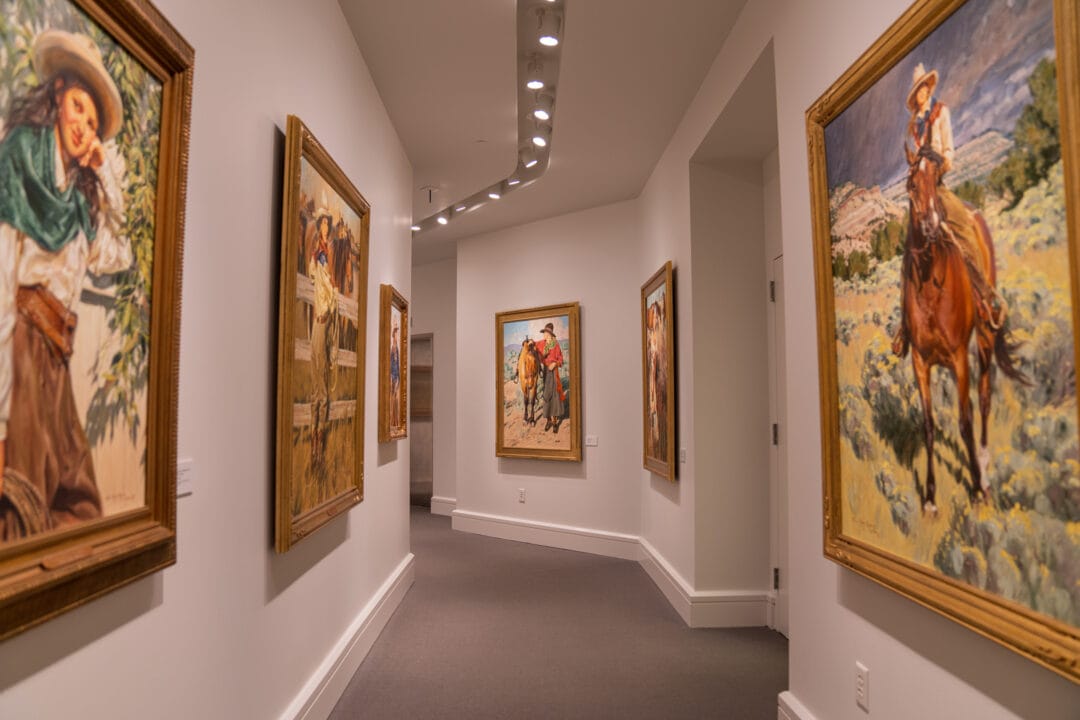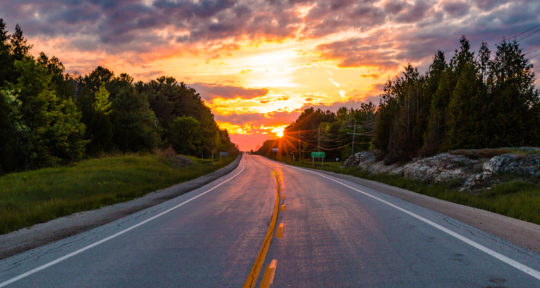As a full-time RVer, my partner and I revisit the American West each year, never tiring of its grandeur, diverse terrain, and extensive history. Wanting to learn more about the cowgirl’s role within the history of the West, I typed “Cowgirl Museum” into my browser one night. “There has to be a museum dedicated to cowgirls,” I thought.
Months later, standing in the stunningly elegant foyer of the National Cowgirl Museum and Hall of Fame in Fort Worth, Texas, I’m glad my hunch was correct. “Women have always been an incredibly important part of the West. They were always there, always involved,” says Bethany Dodson, research and education manager at the museum.


I walk with Dodson through the museum, finding her incredibly patient and knowledgeable as she answers every question I throw her way. We pass by Thomas Edison’s 1894 short film of Annie Oakley sharpshooting in Wild Bill’s Wild West Show (Oakley was the show’s only female performer). Some of her possessions are on display, including a rifle and her wedding ring.
“[Cowgirls’] stories weren’t told as often as the cowboys’ and male ranchers’, but they were there and did the same hard work,” Dodson says. “They were an instrumental part of what Western lifestyle was and still is today.”
One of a kind
Today, the only museum dedicated to honoring and celebrating “women past and present, whose lives exemplify the courage, resilience, and independence that helped shape the West,” is located within the heart of Fort Worth’s Cultural District. In 1975, the museum and Hall of Fame began in the Deaf Smith County Library basement in the Panhandle community of Hereford, Texas, with a borrowed typewriter and a few belt buckles and bandanas. With more artifacts and inductees, the museum and Hall of Fame outgrew its home in Hereford, and in 1993, the search for a new location began to broaden the museum’s outreach and education.
During Cheyenne’s rough-and-tumble Wild West days, the town’s women were the toughest of the bunch
“In the beginning, it was specifically about rodeo,” says Dodson. “When we began honoring women of different backgrounds who influenced the West, such as artists, entertainers, historians, ranchers, and so on, we outgrew the space. In 1996, the museum moved here to Forth Worth, ‘Where the West begins.’”



The National Cowgirl Museum and Hall of Fame worked with architect David M. Schwarz to ensure its new home would stand tall within the Cultural District. According to Dodson, “Schwarz put a lot of time and effort into different design elements that were thoughtful toward what we accomplish here. Throughout the outside and inside of the building, you’ll see elements of the lariat rope, the desert rose, and horse heads. Like hidden easter eggs, they’re an homage to the cowgirl.”
Dodson points up to the horse heads above us. In addition to architectural motifs and design, American muralist Richard Haas painted an epic exterior mural that stems from the building’s architecture and plays with dimension. Walking up to the museum, the mural’s cowgirls on horses race toward me, eliminating the separation between the inside and outside of the museum.
What does it mean to be a cowgirl?
Beginning with three rodeo women inducted in 1975, the Hall of Fame now includes ranchers, activists, musicians, educators, photographers, artists, entertainers, conservationists, political figures, and more. In the last 5 years, the museum and Hall of Fame, in partnership with its board of directors, have made deliberate progress in identifying and honoring women of color. However, more progress is needed, and the board remains committed to these efforts, as stated on the museum’s website.

Prior inductees include Sacagawea, Lewis and Clark’s Native guide; animal expert Temple Grandin, Ph.D.; Clara Brown, a formerly enslaved woman and Colorado pioneer; Sandra Day O’Connor, the first female U.S. Supreme Court Justice; Pueblo potter Maria Martinez; Patsy Cline, the first woman inducted into the Country Music Hall of Fame; and, of course, sharpshooter Annie Oakley, who was inducted in 1984.
“A cowgirl is a woman who knows her own mind,” Dodson says. “She is going to accomplish what she sets out to accomplish. She can do that on the back of a horse, with a computer, a guitar, whatever.”
What to expect
The museum’s permanent exhibits include the Kit Moncrief galleries and It’s Never Just a Horse exhibition, Hitting the Mark: Cowgirls, and Wild West Shows gallery with The Legends. Recent rotating exhibits featured props, costumes, and photography from the Paramount+ series 1883 and an exhibit of Bob Wade’s photography and paintings of cowgirls.




“In addition to all of the incredible artifacts we have in the galleries, there are also a lot of interaction rooms, there’s a photo booth that inserts you into vintage photographs, and you can ride a bucking bronc and send yourself the video,” says Dodson. “There’s also a Western Design Room where you can design your own boot, shirt, or horse.”
Artifacts within the museum range from a traditional Mexican traje de charro to sketches from Pixar of Jessie the Yodeling Cowgirl from Toy Story 2. You’ll also see your fair share of jeweled items: cowboy boots and hats, saddles, buckles—this is still Texas, after all.
If you go
The National Cowgirl Museum and Hall of Fame is open Tuesday through Saturday from 10 a.m. to 5 p.m., Sunday from 12 to 5 p.m., and closed on New Year’s Day, Independence Day, Thanksgiving, Christmas Eve, and Christmas Day.





